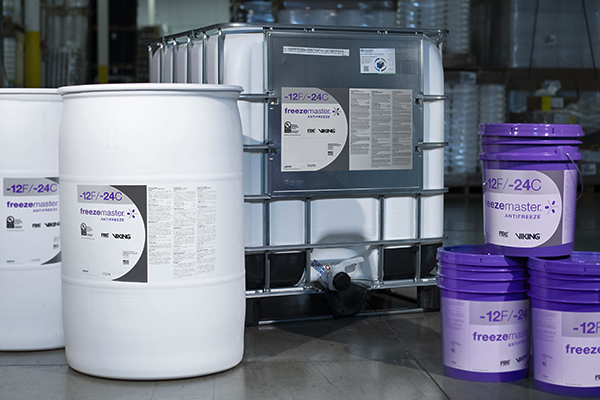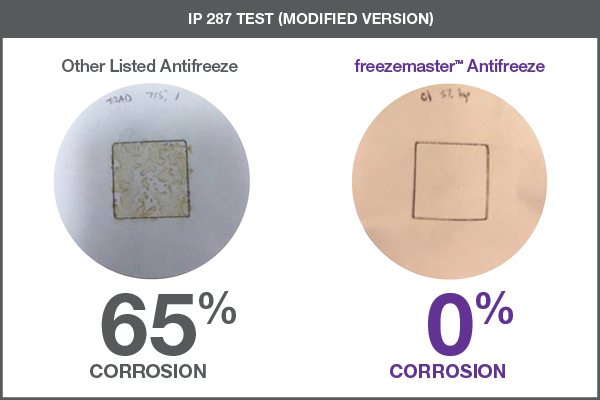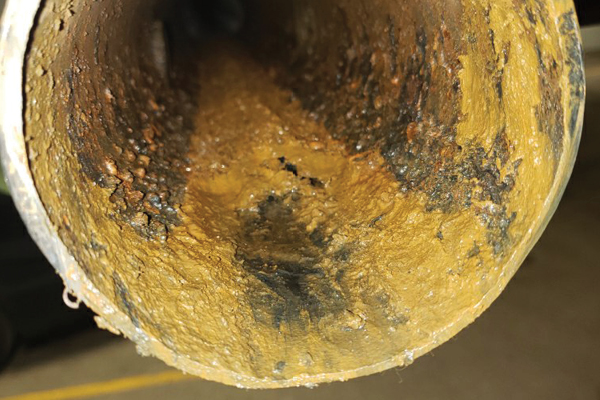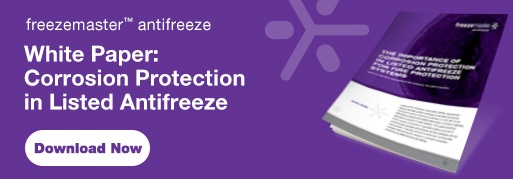Water-filled pipes for fire sprinkler systems, such as those made of metal or CPVC, must remain above 40° F (4.44° C) to prevent freezing that can cause severe damage, leaks or pressure drops. Using glycerin and propylene glycol-based antifreeze solutions had been the industry standard for many years, enabling sprinkler systems to protect lives and property despite severe cold, particularly in northern climates.
Since 2012, National Fire Protection Association (NFPA) standards have required that all new antifreeze systems use a listed antifreeze product that also has corrosion resistance properties to protect sprinkler pipes against premature degradation, costly repairs and possible system failure. In addition, the 2014-2020 Editions of NFPA 25 require that nonlisted glycerin and propylene glycol antifreeze solutions used in existing wet sprinkler systems be drained and replaced with a listed antifreeze solution by September 30, 2022.
Global specialty chemical company The Lubrizol Corporation has developed and acquired a broad range of corrosion-inhibiting additives over the past century that give it a core competency and a leadership position in the metal protection industry, making the organization uniquely qualified to bring to market a freeze protection technology with a breakthrough corrosion inhibitor. Lubrizol formulated freezemaster™ antifreeze, which not only meets UL corrosion resistance requirements, but also achieves elevated levels of corrosion protection through the development of a corrosion inhibitor that outperforms an other UL-listed alternative in the required corrosion performance.
Let’s take a look at how corrosion compromises fire sprinkler performance, how antifreeze can be instrumental in resisting corrosion, and how commercially available listed products compare in corrosion protection properties as determined by lab testing.

Enhanced Corrosion Testing Protocols
To achieve reduction in corrosion rates, UL 2901, “Standard for Antifreeze Solutions for Use in Fire Sprinkler Systems,” established product testing protocols that must be met or exceeded. Approved premixed antifreeze solutions must not cause the corrosion to exceed 1.0 mils/year (0.025 mm/year) for ASTM A108, Grade 1010 steel; ASTM B16, H02 (Half Hard) brass; or Type 304 stainless steel, among other metallic materials that might be used in sprinkler applications with antifreeze.
The freeze protection technology of freezemaster™ antifreeze meets these baseline corrosion resistance requirements. But Lubrizol went further, bringing the fire protection market an antifreeze that outperforms the other UL-listed alternative in corrosion performance, effectively reducing pipe corrosion by up to 65 percent. Lubrizol incorporated several additional metalworking tests and one variation on a third test that UL required into its examination of the best antifreeze formulation for the sprinkler market. The objective: to evaluate whether its new antifreeze solution could prevent corrosive action sooner and better than the alternative listed commercial product.

Corrosion Battle Can Begin Early
Piping on new fire suppression systems may start out with a thin layer of corrosion, and metal fines can be left on the surface from manufacturing and installation. These particles add to the surface area of the system that is capable of corroding and ultimately forming system-clogging sedimentation. Thus the first test method, IP 287 “Determination of Rust Prevention Characteristics of Water Mix Metal Working Fluids,” was intended to evaluate the expected corrosion behavior of Lubrizol’s new antifreeze on these metal fines, compared to the other UL-listed antifreeze.
In a modified version of the IP 287 test, Lubrizol compared the corrosion behavior on cast iron chips placed on filter paper and saturated with either its new antifreeze or the other listed antifreeze. After two hours, the chips were removed, and the filter paper rinsed to expose the area covered by the chips and determine a resulting percentage of rust. Lubrizol’s antifreeze presented no corrosion while the other commercially available listed fluid gave rise to 65% rust during the test.
Galvanic Corrosion Safeguards
Fire suppression systems are rarely comprised of only one metal type, or identical grades of a single metal. When dissimilar metals are in direct contact with one another or connected by a conductive fluid, a galvanic cell can form in the sprinkler system where one of the dissimilar metals will corrode preferentially over the other. The second metalworking test derives from ASTM G71 “Standard Guide for Conducting and Evaluating Galvanic Corrosion Tests in Electrolytes.” This test establishes the behavior of two dissimilar metals in electrical contact in an electrolyte under low-flow conditions. If corrosion is not present, color changes and sediment in the antifreeze solution will not occur.
Lubrizol built and tested several galvanic cell couples to measure electrical current over time while immersed. UL requires monitoring for 90 days, but in only seven days, it was possible to tell that the voltage versus time curves were radically different between the two solutions, indicating galvanic corrosion occurred more readily in one instance. In addition, the commercial product took on a blue color during the test, indicating that copper was being leached into the solution. This color change did not occur with Lubrizol’s new antifreeze, which is listed for use in galvanized piping systems, unlike the other UL-listed product.
A long-term pipe storage test was also conducted to simulate real world fluid-pipe contact. Using Schedule 40 pipe capped with half-hard brass fittings, a sample port was drilled in the top for ease of filling and sampling and sealed with a nylon screw. Samples of Lubrizol’s new antifreeze and the other commercially available antifreeze were added to the pipes and stored at 25 degrees Celsius and 40 degrees Celsius. At the end of 90 days, the pipes were cut open and visually inspected. Corrosion began to appear in the competitive listed solution in that time; Lubrizol’s antifreeze inhibited the formation of corrosion.

Resisting MIC
Finally, in an effort to establish MIC resistance versus the other commercially available listed antifreeze solution, Lubrizol contracted with one of the world’s leading laboratories in analyzing metallurgical failure and corrosion behavior. A screening test was developed to characterize the conditions conducive to MIC. Accelerated testing simulated flow around suspended carbon steel coupons that had been inoculated with sulfate-reducing bacteria (desulfovibrio vulgaris). These microorganisms are common in anaerobic environments where they work to degrade the surfaces they inhabit. After 336 hours of this testing, neither solution showed signs of corrosion, but only Lubrizol’s antifreeze, as determined by DNA testing, lacked any sign of continued biofouling from bacterial growth that could have set up the conditions for a future problem with MIC.
In order for fire sprinkler systems to do their lifesaving work, they must be protected from damaging corrosion, which can flourish in both wet and dry sprinkler systems because neither are ever 100% dry. In wet systems using listed antifreeze, the chosen formulation has a significant and measurable bearing on just how well corrosion is resisted. Lubrizol, building on its extensive expertise in metallurgy, invested in a series of corrosion tests in addition to those required by UL and was able to demonstrate how much further it was possible to go to resist corrosion of both biological and non-biological origin in sprinkler system antifreeze.
Learn more by downloading our free white paper:
Other Corrosion Protection Resources
- Blog Post: Using Antifreeze to Address Microbiologically Influenced Corrosion in Fire Sprinkler Systems
- Blog Post: The Importance of Corrosion Protection in UL-Listed Antifreeze for Fire Sprinkler Systems
- Blog Post: UL 2901 and Fire Sprinkler System Antifreeze Corrosion Issues
- Video: How freezemaster antifreeze is installed and operates
- Article: freezemaster antifreeze feature in Sprinkler Age



